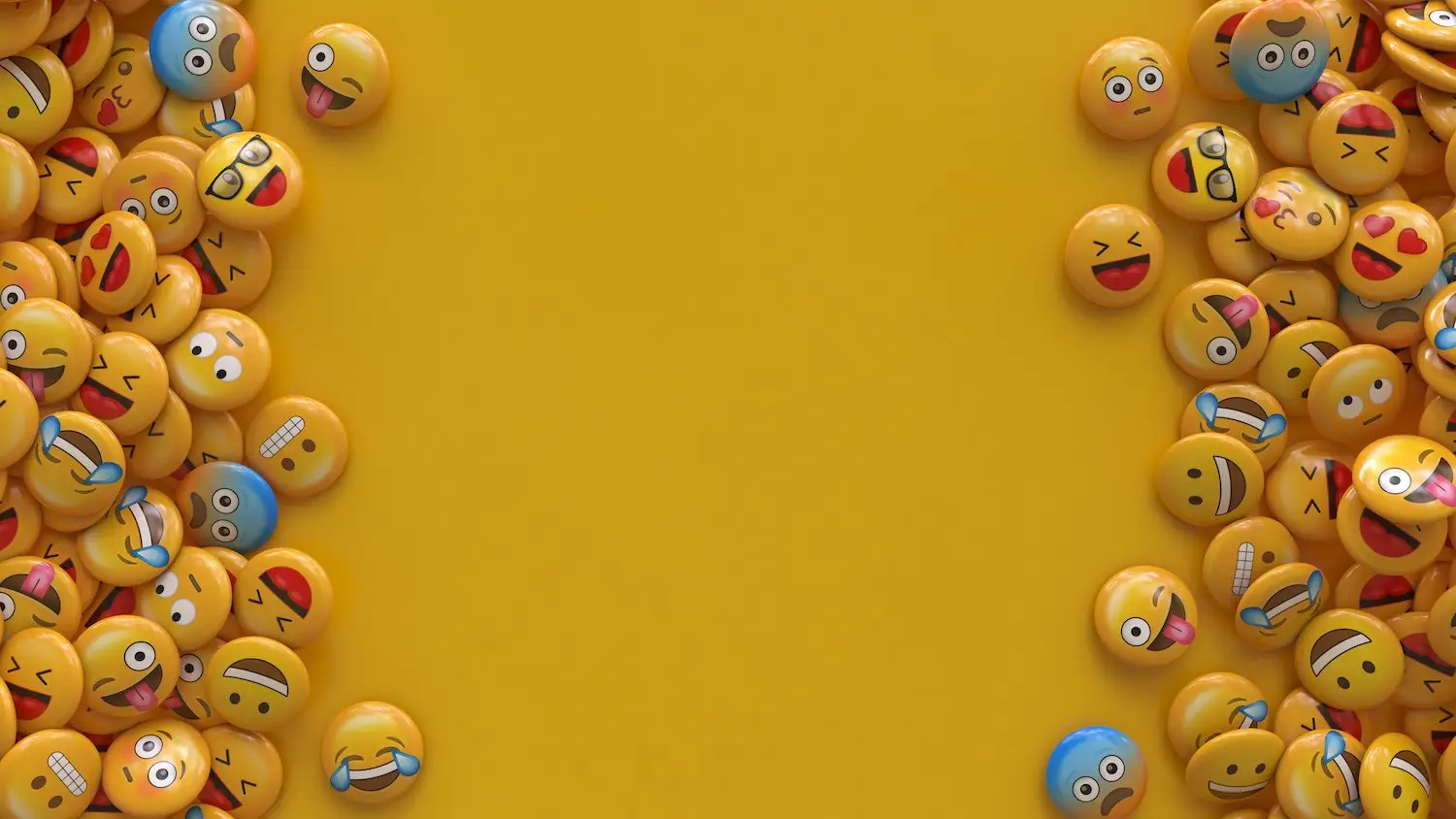As a nurse coach, the nature of your conversations with clients often holds profound emotional depth. These interactions now occur across a myriad of digital platforms, prompting the need for a more nuanced online communication strategy.
Enter emojis – these small, expressive images can be instrumental in shaping digital communication in your nurse coaching business.
Brief Aside/Ramble from the Author
As a card-carrying millennial, my vocabulary runs the gamut from “LOL” to the wink emoji. These little digital glyphs have made a home in my written communication to the point that I used to find myself questioning, “Did I just out-emoji myself? Has my professional email to the president of that international organization just turned into a comic strip?”
In my rather dynamic role as the Executive Director of Business Operations for the Integrative Nurse Coach® Academy, I juggle digital chitchats with a diverse crowd everyday. From registered nurses to business executives, from eager sales teams to marketing maestros, I connect with people whose age range could cover everything from “Taylor Swift’s latest album is lit 🔥” to “I remember when the Beatles arrived in America.”
One thing that tickles me pink (or should I say ‘makes me 😂’) is how instinctively I tune my communication style, like a radio finding the right frequency. Depending on who’s on the other side, I modulate my tone, adjust my words, and yes, even regulate my emoji enthusiasm to strike the right chord.
One minute I’m typing complete and articulate sentences, and the next I’m communicating entirely in memes and hashtags.
It’s like being a communication chameleon, blending into the conversational landscape.
While it’s an amusing game of sorts, it’s also been key to my professional success, ensuring my message doesn’t just knock on the door, but is also invited in for tea!
Anyway, I whipped up an emoji guide just for you, nurse coach… right below this little ramble.
And hey, I have another blog post brewing that goes into more depth about cross-generational communication – if you’re into that sort of thing, stay tuned.
It’s not quite ‘Game of Thrones’ exciting, but it’s sure to add a dash of intrigue to your day!
🙃 <— [“silly” emoji]
Okay, chameleon time…. 🦎
Understanding Emojis
Emojis are digital ideograms or smileys used in electronic messages and web pages. They’re more than just playful elements; they convey emotions and ideas in a succinct, universally understood manner. Emojis provide the element of human emotion that could otherwise be lost in digital communication.
Emojis in Healthcare Communication
The healthcare sector may seem like an unusual setting for emojis. However, used judiciously, emojis can enhance the nurse-patient communication experience, adding a touch of empathy, understanding, and comfort.
For instance, the simple act of including a smiley face at the end of an email could lighten a heavy conversation. A thumbs-up emoji can quickly convey affirmation, while a heart can be a simple but powerful way to convey care and support.
Emoji Benefits for Nurse Coaches
The advent of emojis has opened up new avenues for nurse coaches, offering an innovative way to build connections and facilitate more effective communication. Emojis, when used correctly, can bring a number of benefits to your practice: Emojis can be particularly beneficial for nurse coaches in building rapport and facilitating effective communication. Here’s how:
- Conveying Empathy: One of the greatest strengths of emojis lies in their ability to encapsulate emotions that words may fall short of expressing. In the world of nurse coaching, empathy is paramount. Emojis can be an excellent tool to convey compassion and understanding. The simple use of a heart emoji ❤️ can symbolize care and compassion, while a smiley face 😊 can provide a sense of reassurance and encouragement to clients, making them feel validated and understood.
- Simplifying Communication: Health information can often be dense and challenging for clients to grasp. Emojis can act as visual aids to simplify and elucidate complex health concepts. For instance, a lightbulb emoji 💡 could represent a new idea or understanding, while a running figure 🏃 could symbolize the importance of physical activity.
- Enhancing Engagement: In today’s digital age, keeping your clients engaged can be a daunting task. Emojis can add an element of fun and familiarity to your digital content, making it more interactive and relatable. A high five emoji 🙌, for example, can celebrate achievements and milestones, fostering a positive and engaging environment for your clients.
- Building a Brand: Emojis can also play a key role in shaping your professional brand. They can make your communication style more distinctive, approachable, and humanized. Consistent use of certain emojis can become a part of your brand identity, creating a unique and memorable image that clients can connect with.
- Encouraging Open Communication: The use of emojis can create an informal and comfortable atmosphere, encouraging clients to open up more during discussions. For instance, the thinking face emoji 🤔 can invite clients to share their thoughts or ask questions, fostering a more open and effective dialogue.
- Indicating Tone: Emojis can help convey the tone of a message, which can be particularly useful in written communication where vocal cues are absent. For example, a winking face emoji 😉 can indicate a light-hearted comment, preventing misunderstandings and maintaining a positive rapport with clients.
- Cultural Adaptation: In our globalized world, nurse coaches may work with clients from diverse cultural backgrounds. Many emojis are universally understood, they can be a useful tool in transcending language barriers and connecting with clients on a human level, irrespective of their cultural background. For example, the clapping hands emoji 👏 is a universal sign of praise and can be used to celebrate a client’s progress. However, it’s crucial to acknowledge that emojis carry varying cultural meanings, which can lead to differences and even conflicts in interpretation. For example, the “thumbs up” 👍 emoji is widely regarded as positive in Western cultures, but in some Middle Eastern countries, it can be seen as an obscene gesture.
- Facilitating Positive Reinforcement: Emojis can serve as motivational tools for your clients. For example, the ‘muscle’ 💪 emoji can congratulate clients on achieving their health goals, serving as positive reinforcement and encouraging continued progress.
- Enhancing Virtual Presence: In the era of remote consultations and digital health platforms, creating a sense of personal presence can be challenging. Emojis can infuse warmth and personality into digital interactions, helping to create a sense of closeness and attentiveness, even from a distance.
- Increasing Memorability: The use of visually appealing emojis can make your messages more memorable. By associating specific advice or reminders with particular emojis, you can enhance recall and adherence to important health information. For example, the use of the apple emoji 🍎 could remind clients of nutritional advice, like the old saying, “An apple a day keeps the doctor away.”
Emoji Best Practices
Before integrating emojis into your professional communication, it’s crucial to understand some guidelines:
- Understand Your Audience: Know your clients’ preferences. While some may appreciate a friendly emoji, others may prefer more formal communication.
- Use Emojis Sparingly: Overuse can diminish their impact and make your message seem less professional. Use them to enhance your message, not confuse it.
- Keep It Relevant: Choose emojis that align with your message. Irrelevant emojis can distort your message and cause misunderstandings.
- Be Aware of Cultural Differences: The interpretation of emojis can vary across different cultures, so always consider the cultural context.
- Professionalism: While it’s beneficial to appear approachable, maintaining professionalism is crucial. Avoid emojis that could be deemed inappropriate in a professional setting.
Embracing emojis as a nurse coach requires balance and discernment, yet it can provide a fresh, empathetic dimension to your digital communications. With careful, thoughtful use, these little symbols can have a big impact on your client relationships, your brand, and your overall communication strategy.
Emoji Cheat Sheet for Nurse Coaches
Was the above TL;DR? (Too long, didn’t read?) I def. get it!
So, without further ado, let’s jump into a quick and handy emoji guide filled with use-case examples just for nurse coaches. You can also download the Emoji Cheat Sheet for Nurse Coaches here!
- 😊 (Smiling Face): Signals happiness and approval. “Great job on achieving your exercise goal this week 😊.”
- 🍎 (Apple): Signifies healthy eating. “Try to include more fruits like 🍎 in your diet for a vitamin boost.”
- 🏃♀️ (Woman Running): Represents physical activity. “Remember, regular 🏃♀️ is key to maintaining your health.”
- 🧘♂️ (Person in Lotus Position): Symbolizes relaxation and meditation. “Consider adding 🧘♂️ to your daily routine to help manage stress levels.”
- 💤 (Sleeping Symbol): Represents sleep or rest. “Getting a full night’s 💤 is essential for your body’s recovery.”
- 🤔 (Thinking Face): Invites thought or contemplation. “What are your health goals for this year 🤔?”
- 👍 (Thumbs Up): Indicates approval or agreement. “You’ve made impressive progress on your health goals 👍.”
- 📅 (Calendar): Signifies appointments or schedules. “Let’s set up a follow-up appointment on your 📅.”
- 🥦 (Broccoli): Represents vegetables or healthy food. “Don’t forget to incorporate more 🥦 and other green vegetables into your meals.”
- 💧 (Droplet): Symbolizes hydration. “Remember to drink enough water and stay 💧 throughout the day.”
- 💉 (Syringe): Represents vaccination or medication. “It’s time for your flu shot 💉.”
- ❤️ (Heart): Expresses love, care, and support. “Remember, we’re here to support your journey to better health ❤️.”
- 📚 (Books): Stands for learning or information. “Here are some 📚 that provide great insights into maintaining a balanced diet.”
- 👏 (Clapping Hands): Shows praise or celebration. “Congratulations on lowering your cholesterol levels 👏!”
- 💪 (Flexed Biceps): Indicates strength or effort. “Keep pushing forward with your fitness goals. You are stronger than you think 💪.”
- 🚭 (No Smoking): Symbolizes the advice or recommendation to quit smoking. “For better lung health and overall wellness, let’s work on your 🚭 goal.”
- 🌞 (Sun): Represents daylight, warmth, or the start of a day. “Try to get some outdoor activity early in the day when the 🌞 is up.”
- 💌 (Love Letter): Can be used to refer to an important message or communication. “Please check the 💌 we sent with detailed dietary guidelines.”
- 👩⚕️ (Woman Health Worker): Represents the nurse coach herself. “As your 👩⚕️, I’m here to guide you through your health journey.”
- 🔄 (Counterclockwise Arrows Button): Stands for repetition or routine. “Remember, consistency is key! Regular exercise and a balanced diet 🔄 are vital for maintaining good health.”
- 🍇 (Grapes): Represents fruits and healthy snacking options. “For your mid-afternoon snack, try a handful of 🍇 or other fruits.”
- ⏰ (Alarm Clock): Signifies reminders or time management. “Set a ⏰ as a reminder for taking your medications on time.”
- 🚴♂️ (Man Biking): Indicates physical activity or cardio exercises. “Consider adding 🚴♂️ to your workout regimen for heart health.”
- 😷 (Face with Medical Mask): Represents illness or the need to take precautions, especially relevant in the context of a pandemic. “Remember, during these times, it’s crucial to wear your 😷 when in public.”
- 📉 (Chart Decreasing): Used to symbolize a decrease, such as lowering cholesterol or weight loss. “Your recent lab results show a 📉 in blood pressure. Keep up the good work!”
- 🌝 (Full Moon): Represents nighttime or sleep. “Ensuring you get quality sleep during the 🌝 hours is crucial for your health.”
- 🚰 (Potable Water Symbol): Stands for hydration. “Staying 🚰 is vital for good health, so keep that water bottle handy!”
- 🤝 (Handshake): Can indicate agreement, partnership, or teamwork. “Looking forward to working together on your health goals 🤝.”
- 🤸♀️ (Woman Cartwheeling): Stands for flexibility and fun in exercise. “Exercise doesn’t have to be boring. Have you ever tried yoga or 🤸♀️?”
- 🧡 (Orange Heart): Can represent warmth, care, and enthusiasm. “I’m here to support you on this journey. Remember, you’re not alone 🧡.”
Ronald D. Kanka is the Director of Business Operations for the International Nurse Coach Association | Integrative Nurse Coach® Academy.
He previously served as the Program Coordinator of the University of Miami, Miller School of Medicine, Department of Family Medicine and Community Health, Integrative Medicine Division, where he coordinated large conferences (and cruises) on topics such as Clinical Nutrition, Acupuncture, and other complementary therapies.
In 2012, Ron met INCA Co-Founder, Susan Luck, at a Clinical Nutrition conference. Soon after, he began consulting for INCA as a Program Manager, and was essential in the growth of INCA’s global presence and helped to propel INCA to the forefront of the Nurse Coach movement. When Susan Luck and Barbara Dossey decided to convert the onsite Integrative Nurse Coach® Certificate Program to an online format, they asked Ron and Karen Avino to join them as partners to assist in this large undertaking.






